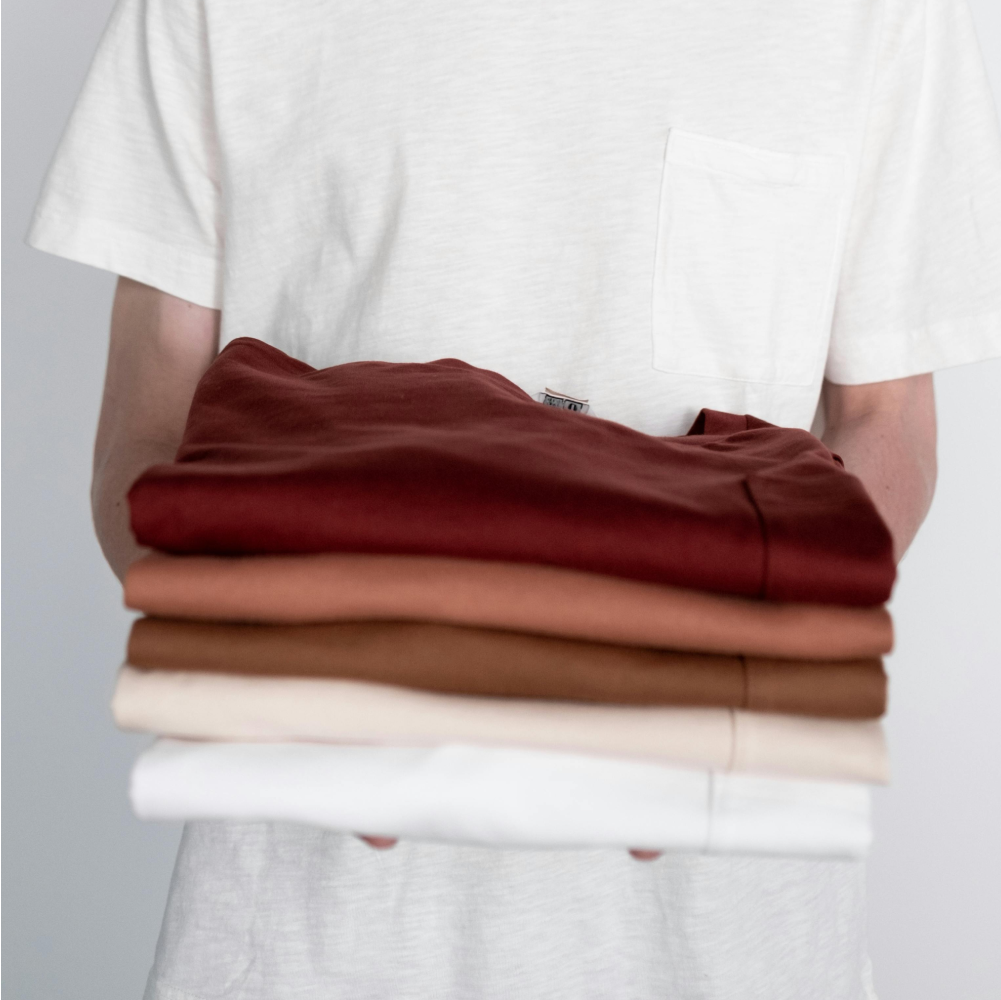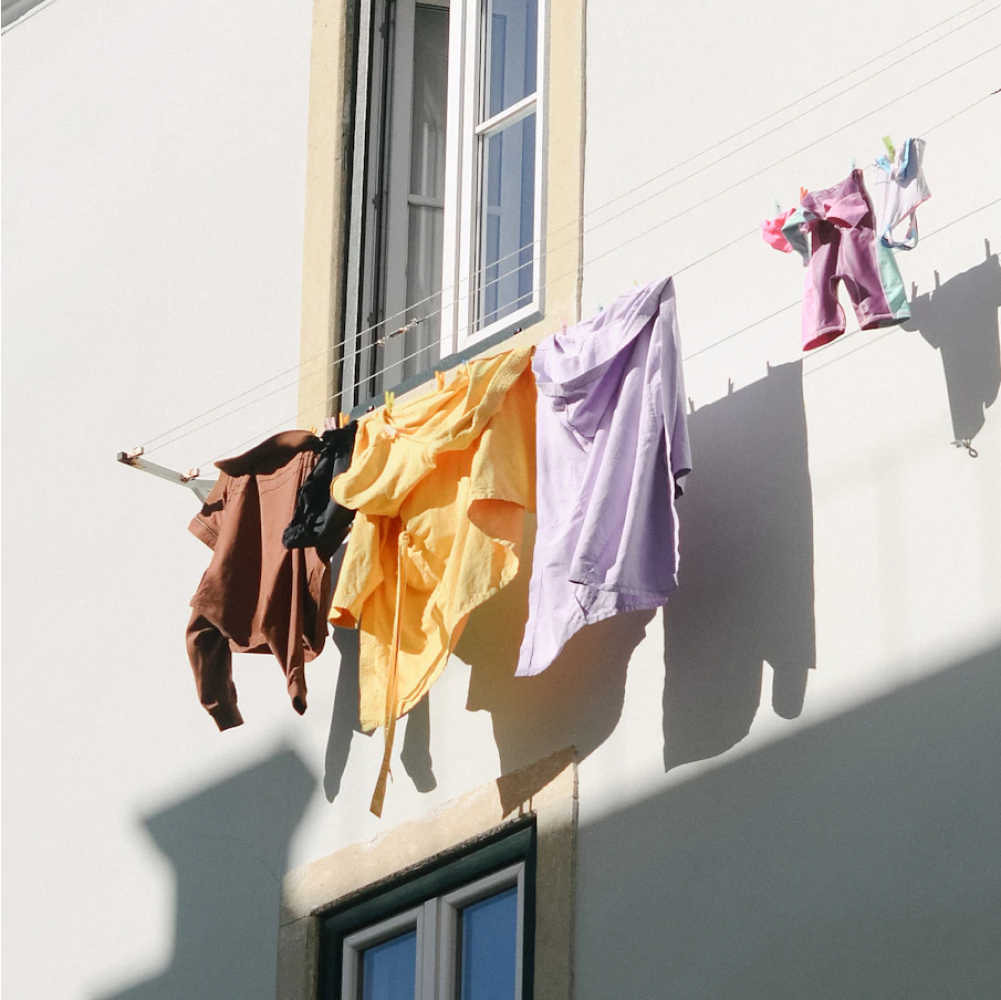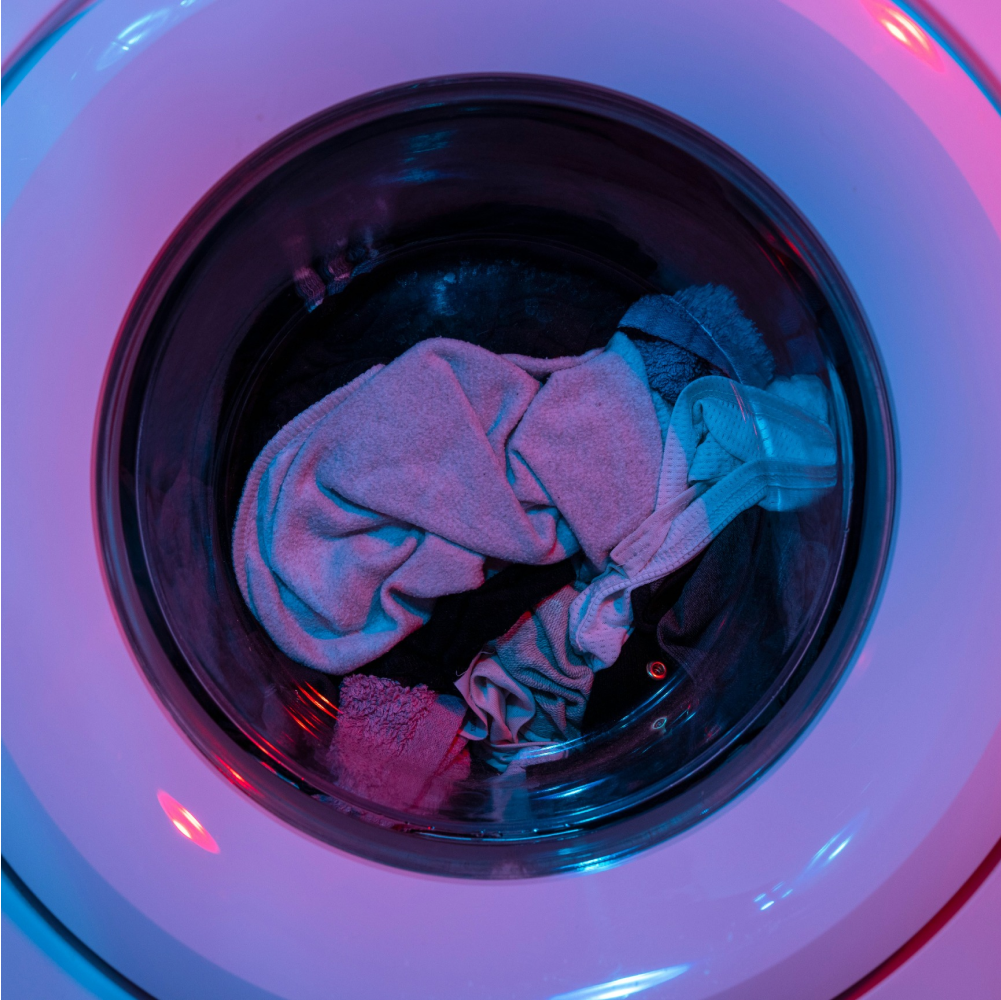Why fabric care is important for summer clothes
As the temperature soars, sweat, dirt, and bacteria can easily accumulate in your summer clothing. Usually, people tend to use aggressive washing methods to get rid of these problems, but the vibrancy and freshness of the clothing also get affected in the process. As a result, most summer clothes start looking worn-out only after a few wears and washes.
Moreover, summer clothing is made of natural and breathable fabrics, including cotton, linen, etc. While these fabrics are great for beating the heat in hot weather, they also require extra care to stay in their best shape. Using high-duty detergents, hot-water washing, or too frequent tumble drying can lead to lint, pilling, colour fading, and premature wear-and-tear in summer garments.
How to wash summer clothes
Step 1: Sort your laundry
When it comes to laundry, sorting is the key to effective fabric care! Collect all your summer wardrobe essentials, including dresses, shorts, tees, swimwear, and anything else that you plan on wearing during the upcoming summer days. Check the pockets, remove any extra item(s), remove belts, and finally turn your clothes inside out to minimise friction during the washing cycle.
After that, make separate loads of laundry based on colour, fabric, level of dirtiness, and pilling. For instance, towels and socks that are notorious for pilling should be washed in a different cycle to prevent the bobbles and lint from transferring onto other summer garments. Similarly, make a separate pile for everyday clothing, workout clothing, bedding, etc.
Step 2: Check the care label
Before tossing your clothes in the laundry machine, take a quick look at the care label attached to them. A care label gives you details about fabric composition as well as the optimal washing, drying, and care guidelines.
For example, BIORESTORE cotton laundry powder is suitable for reviving almost all cotton fabrics (with at least 70% cotton composition), but to stay on the safe side, check the garment composition and washing guidelines on the care label. You can also pick out fabrics that need to be handwashed in this step.
Step 3: Select the right wash cycle
Depending on the fabric type, level of soiling, and guidelines mentioned in the care label, select the best washing cycle for your clothing.
For example, 100% cotton or pure cotton can shrink up to 20% when exposed to high washing temperatures. While pre-shrinking can minimise shrinkage in cottons, there is still no guarantee that the fabric won't shrink later on. Therefore, cold or lukewarm water is the best temperature to wash your cottons without reducing their lifespan.
A standard or regular cycle with lukewarm water is ideal to wash your summer clothes. Using too high temperatures can affect the vibrancy and colour of your clothing, while using extremely low temperatures can lead to uneven cleaning.
PRO TIP: Never use more than the recommended dose of detergent for washing your summer clothes. Doing so can result in uneven cleaning, a buildup of detergent residue, and excessive friction, ultimately leading to lint, pilling, and colour fading.
Step 4: Use BIORESTORE cotton laundry powder.
If you want to refresh clothing, look no further than BIORESTORE cotton. Due to frequent wear and washing, summer clothes can get linty, pilled, or have a have a distorted texture. BIORESTORE cotton can effectively get rid of all these challenges and give instant freshness to your wardrobe.
Simply add BIORESTORE cotton to the drum of your home laundry machine. Select the “cotton” or “eco” cycle and set the temperature to 40ºC. Run the cycle for 2 hours. Once the cycle is completed, toss the clothes into the tumble dryer. The result? A revitalized and refreshed summer wardrobe!
Keep in mind: BIORESTORE cotton is not suitable for handwashing clothes. Sticking to the mentioned temperature and guidelines is important to make the cotton laundry powder work optimally.
Step 5: Air dry
Thankfully, you have the luxury of enjoying bright and sunny days in the summer season. This means there is no need to use a tumble dryer every time you do your laundry! Air-drying not only protects your clothes from extra heat and friction but also cuts down your electric bills significantly!
By air-drying, you can extend the lifecycle of summer garments and save your precious money. However, make sure that the clothing line is clean before you put out clothing to dry, so no bacteria or stains are transferred to fresh laundry.
Another benefit of air-drying is that it reduces wrinkles and creases in your fabrics. Simply hang your laundered clothes from the top in a way that doesn’t stretch the garment. Once the clothes are dry, you will notice that the creases are way smaller as compared to the after-effects of using tumble or machine dryers.
Step 6: Fold and store
With the drying step, your laundry is technically complete. But without properly folding and storing, all of this effort can go to waste. That’s why it's best to fold your clothes as soon as possible. This will also help in preventing creases, as you won’t have to pick out clothes from a tangled mess.
The KonMari fold and the military fold are both great techniques to keep your closet organised while using the least amount of space. It's also good practice to make separate categories of items, such as tees and shorts, etc., so you don’t have to go rummaging through your entire closet in order to find a single item.
FAQs
Can you use bleach on summer clothes?
Using bleach on summer clothes can lead to fabric weakening, colour loss or yellowing of whites. The chlorine in bleach is extremely aggressive and can react with the textile fibres, making them weaker and weaker over time. In some cases, the clothes can also start feeling stiff, dingy or lose any special textile surface finishes. This is why it’s best to avoid using bleach on summer clothing





